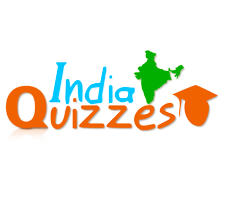Question: The complete digestion of carbohydrates, proteins and fats occurs in
1. Stomach
2. Liver
3. Small Intestine
4. Large Intestine
Answer: 3
Question: The acid in gastric juice is
1. acetic acid
2. nitric acid
3. hydrochloric acid
4. sulphuric acid
Answer: 3
Question: Nematocysts are present in
1. Ascaris
2. Centipede
3. Sea anemone
4. Starfish
Answer: 3
Question: BCG vaccination is given at the age of
1. 10 years
2. Newborn
3. Within 15 days
4. 2-3 years
Answer: 2
Question: Urea is synthesised in the –
1. Liver
2. Lung
3. Spleen
4. Kidney
Answer: 1
Question: The image formed by an object on the retina of the human eye is –
1. Real and iverted
2. Real and upright
3. Virtual and inverted
4. Virtual and upright
Answer: 1
Question: Dengue is caused by –
1. Virus
2. Deficiency of Vitamin D
3. Deficiency of Fe
4. None of these
Answer: 1
Question: In which organ of the body is the red blood corpuscle made?
1. Liver
2. Bone marrow
3. Kidneys
4. Heart
Answer: 2
Question: The edible potato is the modified form of which part of the plant?
1. Roots
2. Stem
3. Flower
4. None of these
Answer: 2
Question: Which of the following can fly?
1. Hornbill
2. Ostrich
3. Emu
4. Penguin
Answer: 1
Question: Which of the following makes the skin layer impervious to water?
1. Collagen
2. Melanin
3. Keratin
4. Chitin
Answer: 4
Question: Which of the following weeds has been found useful to check water pollution caused by industrial effluents?
1. Parthenium
2. Elephant grass
3. Water hyacinth
4. Both (A) and (B) above
Answer: 2
Question: Two richest known sources of edible protein are
1. Meat and eggs
2. Milk and vegetables
3. Soyabean and groundnut
4. Some type of algae and other micro-organism
Answer: 3
Question: Which one of the following organs converts glycogen into glucose and purifies the blood?
1. Liver
2. Kidney
3. Lungs
4. Spleen
Answer: 1
Question: Minamata disease was caused due to
1. Lead
2. Cyanide
3. Mercury
4. Methyl isocyanate
Answer: 3
Question: Which one of the following disease is not transmitted by tiger mosquitoes ?
1. Yellow fever
2. Dengue
3. Chikungunya
4. Japanese Encephalitis
Answer: 4
Question: Limbless Amphibia belongs to the order –
1. Urodela
2. Anura
3. Gymnphiona
4. None of the above
Answer: 3
Question: Which one of the following is a rich source of amylase?
1. Brain
2. Blood
3. Thyroid
4. Pancreas
Answer: 4
Question: Breeding and management of bees is called
1. Sericulture
2. Apiculture
3. Silviculture
4. Pisciculture
Answer: 2
Question: The macro-nutrients provided by inorganic fertilizers are –
1. carbon, iron and boron
2. nitrogen, phosphorus and potassium
3. magnesium, zinc and iron
4. magnesium, manganese and sulphur
Answer: 2
Question: Vermicompost is a/an –
1. Inorganic Fertilizer
2. Toxic Substance
3. Organic Biofertilizer
4. Synthetic Fertilizer
Answer: 3
Question: Which one of the following is responsible for converting milk into curd?
1. Virus
2. Yeast
3. Fungi
4. Bacteria
Answer: 4
Question: In how many groups can human blood be divided?
1. 4
2. 5
3. 2
4. 3
Answer: 1
Question: Which of the following is fundamentally the Rh factor?
1. An vitamin deficiency
2. A form of anaemia
3. An antigen-antibody reaction
4. A hormonal reaction
Answer: 3

Select Page

